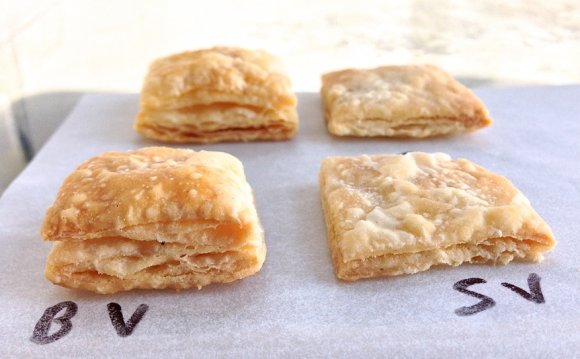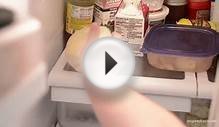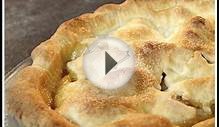
I don’t believe in perfection, in life or in the kitchen. At best, everything we do is a work in progress that gets a tad closer each time we nudge and tweak it. Case in point, last year’s Pie Crust 101 tutorial: My goal was to convince dough-phobes that they needn’t fear the crust by showing how I made mine in five minutes flat, or seriously, way less time than one would spend buying one. My goodness, especially with the lines in the grocery stores this week, right?
Of course in the 12 months since, I’ve probably made about 12 additional doughs and I swear, every single time I think of something that wasn’t in that post and am certain you’ve been robbed. So, without further ado, here is Pie Crust 102: A few extra tips and adjustments. If you’re a pie dough noob, Pie Crust 101 is still all you will need to get the job done, but if you’re looking to take it a step or two further, here you go:
1. I’m over shortening. There, I said it. For most of my life, I didn’t believe in shortening in crusts. It had no flavor, it is rather icky and mysterious if you give it too much thought, and who cares about flakiness in a one-crust pie anyway? But then I weakened my resolve. All the Cook’s Illustrateds and Ina Gartens claimed that the only! best! way to make the flakiest! pie dough was to use shortening in part, and I do value their opinions so. I did this for about two years, and now I’m back to all butter, baby. Do you know why? Well, for all of the original reasons–flavor rules and ickiness is not worth it–but because I have also realized that when you really know how to make pie dough, it won’t matter which fat you use. So butter it is baby! I’ll never doubt it again.
2. I no longer use the food processor for pie dough, and don’t think you should either. Ooh, how very contentious of me! Yet, I am not saying this to be contentious, I am saying this because I have made dozens of crusts in both the food processor and with a hand-held pastry blender and the latter always wins the flaky wars. Here is why: The vast majority of food processor dough recipes tell you to pulse the butter with the flour until it forms coarse or pea-like bits, and then add the water and pulse it until “just combined”. This is where this technique fails: you already have the size butter pieces you want and yet still, you crumble the further. In the end, it is so much harder to overwork your dough and overmix your butter by hand than it is when you use the food processor.
[Also, for those of us lacking dishwashers, the food processor alone is five parts/five dishes (Yes, I count. Every single freaking time I wash it.) and more like ten when you include measuring cups and spoons, sheesh. By hand, I use a large bowl, pastry cutter, measuring spoons, two measuring cups, a knife and a rubber spatula: seven dishes, max. Oh, it counts.]
3. Visible butter = visible flakiness. As I mentioned above, the single most important thing to avoid when making pie dough is not to break down the butter too much. If you cannot see flecks of butter in your final dough, you will miss out on a lot of flakiness. When these butter-speckled doughs hit the oven, the butter melts created tiny pockets in the flour that surrounded it; the steam that escapes from the butter’s water content lifts these pockets. (The principle behind puffed pastry is the same, but we will get to that another day.) These pockets are your flakes. They are your friends. When you make pie dough, your entire goal should be to keep some of these eensy bits of butter visible.
4. Cold, cold, cold, cold and cold. So how do you keep those butter pieces visible? You keep them cold. If they get warm — even a little warm — they get soft, and if they get soft before they hit the oven, they have less of an ability to make the dough flaky. Do everything in your power to keep them cold. If your kitchen is extra warm, as mine is today, you can do a number of things that will help the dough stay colder longer, or at least until you can get it back in the fridge to rest: Cube the butter and re-refrigerate it, mix your flour and sugar and salt and refrigerate that bowl too. If you’re rolling that dough out and it tears and sticks and you must start again? Rechill it first. Sure, I sound a little insane (did you get that part? about the cold being important?) but when everyone is oohing and aahing over your flaky buttery dough, you know it will be worth it.
5. About that vodka. Last year, I used Cook’s Illustrated new and improved pie dough with vodka in it for my demonstration. ‘Vodka?’ you’re thinking, ‘Are you mad?’ But the rationale is that vodka gives the dough the liquid a dough needs to come together but being mostly alcohol, evaporates in the oven, leaving you with an extra flaky dough. Because it is colorless and odorless, nobody will be the wiser what your secret ingredient is. And everyone loves a Top Secret Ingredient, non?
Nevertheless, I learned quickly that I didn’t like this dough — this dough that I told you to use! — much at all. I found it too sticky, and the flakiness not much of an improvement and went back to my old, basic recipe. However, so many of you loved the crust, I wasn’t exactly going to change the recipe. Instead, I’m using that space below to give you my other pie dough recipe, vodka free and illustrated.
Now go forth a bake ye some pie! I’ll be the one in the back row, jumping up and down and shouting ‘You can do it!’ like a high school basketball coach on too many Red Bulls.
All Butter, Really Flaky Pie Dough
Makes enough dough for one double-, or two single-crust pies.
2 1/2 cups (315 grams) flour
1 tablespoon (15 grams) sugar
1 teaspoon (5 grams) table salt
RELATED VIDEO











